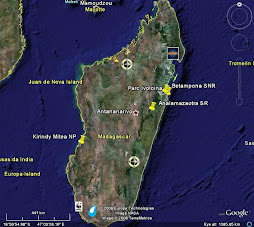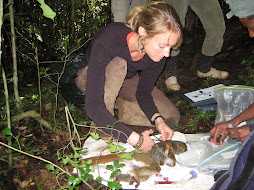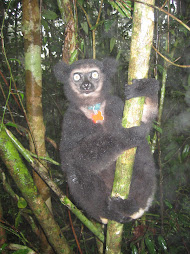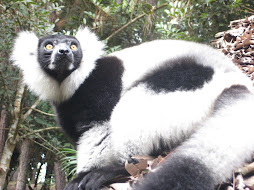A mere 6 days after I left North Carolina…and I arrive at my destination, Kirindy Mitea National Park. A glorious arrival. I was greeted by Dr. Rebecca Lewis, the founder of the research station here, and researcher on sifaka social behavior from the University of Texas-Austin. She’s worked in Madagascar for several years now, but only recently began working in this park. Starting a new research station means a lot of work and a lot of waiting—for permits, for water, for the process to work its way through the Malagasy system. With a lot of patience, she just recently established the gridded trail system and infrastructure for research at Kirindy Mitea. She gave me a tour of my new home, which is comfortable and beautiful, but didn’t take long to tour……see for yourself!
The camp is a colorful, friendly mix of researchers, camp staff, and a Malagasy student, which means 3 languages may be spoken at any one time (Malagasy, French, or English, in that order of frequency). We all eat our meals together, which generally consist of rice with roasted peanuts for breakfast, rice and beans for lunch, and rice and beans for dinner. We try to spice things up a bit and throw in a few new flavors every once in a while. The grated parmesan cheese I brought from the US was a hit, although it was met with some skepticism at first. You mean…….cheese……….as a powder? After some inspection and a little smelling, the staff tasted it. “Tsara,” they replied, which means “good” in Malagasy!

(Top L-R) Tagloire (cook), Vagely (trail maintenance), Dr. Chris Kirk (Physical Anthropologist).
(Bottom L-R) Renari (driver & mechanic), Felana Rakotondranaivo (Malagasy master’s student), Dessy (camp manager), Dr. Rebecca Lewis (camp founder, Primate Social Behavior).
The Lepilemur sing us to sleep and the fosa keep us on our toes--I’m really going to enjoy living here!











.jpg)
.jpg)
.jpg)
.jpg)
.jpg)